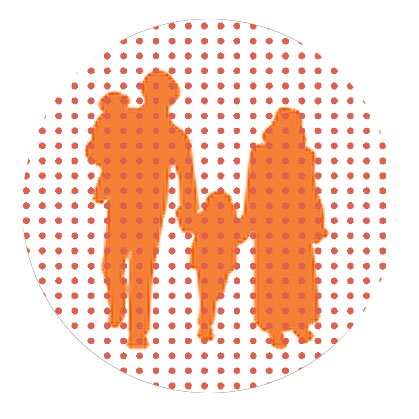Can’t Help It

Appealing to logic doesn’t work when dealing with compulsions or addictions
In order to understand people, we need to understand a little about the human brain. Otherwise, we may waste precious time and effort in our attempts to help others.
“I knew what I was doing was wrong. Did they think I was stupid? Of course I knew it was against the law. I knew I could get into serious trouble. I just couldn’t stop. But they never understood that. They kept ‘explaining’ that I was on dangerous ground and that I should stop.”
People often start their compulsive behaviors young. Their teenage brains prompt, maintain, and grow these behaviors as neural networks change through learning and chemical reactions. What seems to be free will at first becomes a no-choice circuit — the sufferer can’t free himself from the grip of his brain processes.
Brain Science 101
The brain is the most complex and mysterious organ. Let’s look at a basic model of one of its elementary structural components: functional organization. For simplicity’s sake, we’ll say that the top of the brain houses the cortex, the thinking brain. The middle houses the emotional centers, otherwise known as the limbic system, which includes the danger-scanning amygdala. The bottom is home to the “reptilian brain,” the part that governs our animal functions such as respiration, heartbeat, digestive processes, etc.
Why do we need to know this? Because people-changers such as parents, spouses, and community leaders often attempt to impact the behavior of others through appeals to the top of the brain: the prefrontal cortex. They say logical, important truths, assuming that providing education will lead to behavioral change.
Far worse than being a useless intervention, this strategy can lead to untold suffering in cases of obsessive behavior. That’s because the thinking-planning part of the prefrontal cortex has no jurisdiction over the limbic system.
Inside the Obsessive Brain
People engage in obsessive and addictive behaviors to quell the relentless signal of an overactive amygdala. The amygdala scans for danger, looking for potentially painful physical or emotional triggers such as fire, loud noise, change, threats of abandonment or exclusion, and more.
In the case of children, the amygdala searches — and finds — lots to worry about. Anger on the parent’s face can produce an emergency signal, causing all the chemical processes of fight and flight to fire within the child’s brain and body. If this happens too often, the amygdala can eventually get stuck in the “on” position, continuously producing cortisol and other stress chemicals.
A person can also be born with a sticky emergency center. The results are the same: too much stress pouring into every cell of the body. The resultant inner agitation drives a person to seek relief.
What can quiet the inner signal? What provides temporary relief? Obsessive, compulsive, and addictive behaviors.
Treatment
Obsessive behavior releases endorphins — calming, exhilarating chemicals that relieve psychic and physical pain and provide a sense of euphoria and well-being. This is the healing balm that quickly becomes addictive for those suffering the constant agony of negative chemical drip.
The addictive quality of the behavior arises out of the brain’s chemical reward process: stress relief triggers both the dopamine and opioid systems of the brain, causing a complex sequence of chemical, neurological, biological, and behavioral processes that are beyond the scope of this article. Suffice it to say that the sufferer of addictive and compulsive processes has a “broken brain” and requires the help of a brain specialist. Unfortunately, this brain illness itself makes it difficult for sufferers to receive treatment. They often refuse it.
Dangerous Behavior
Some people compulsively overdose on chocolate, with the result that they gain weight. Those who indulge in compulsive behaviors that cause harm to others — those who gamble away the family’s finances or harm the bodies and souls of others — can’t be asked or encouraged to seek help. We can’t appeal to logic because the prefrontal cortex has no role in this illness. When dangerous behavior is a result of inborn or acquired brain dysfunction, as occurs in the compulsive dynamic, force — in the form of untenable consequences — may be needed to produce the incentive for treatment.
(Originally featured in Family First, Issue 777)
Oops! We could not locate your form.

